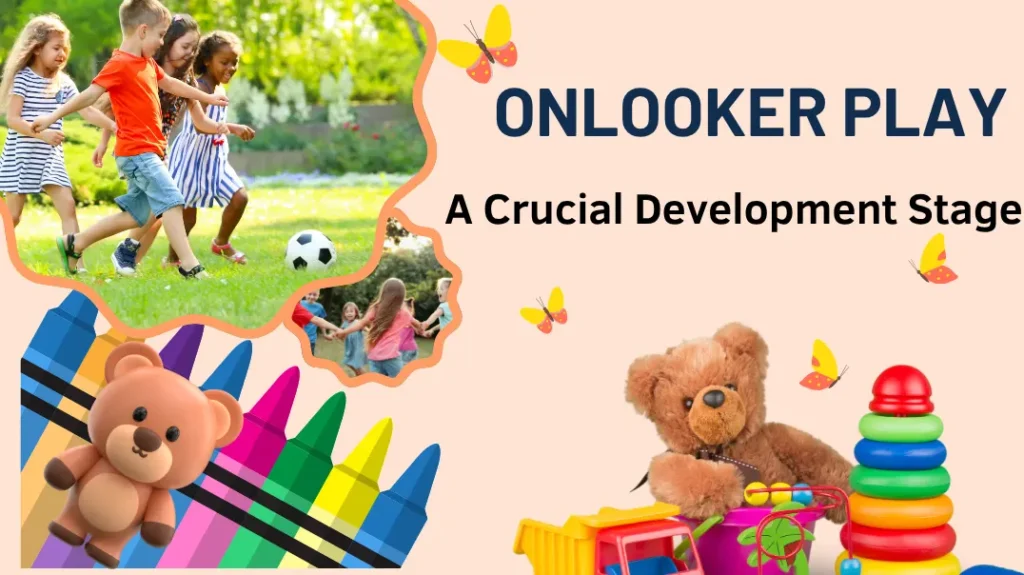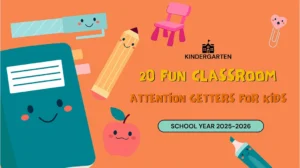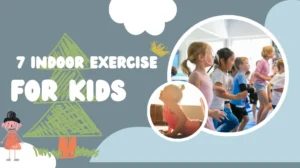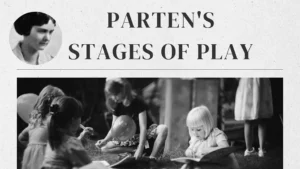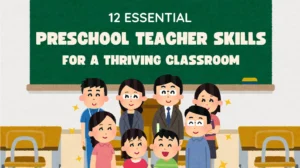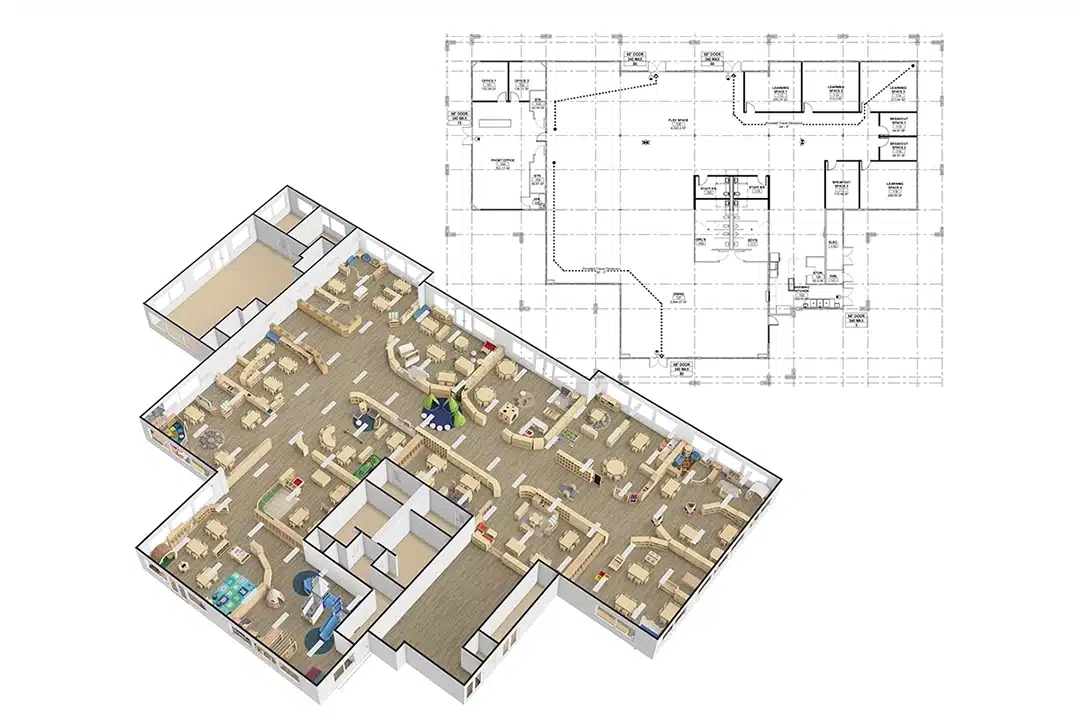Many parents feel concerned when their child chooses to stand on the sidelines instead of joining others at play. It can be tempting to wonder if something is wrong or if your child is falling behind socially.
But what looks like hesitation is often something much more important. This quiet behavior is known as onlooker play, and it is a normal, healthy stage in early development. During this time, children are taking in everything around them, including how others interact, solve problems, and express emotions, all without saying a word.
Rather than pushing children to join in before they are ready, understanding the purpose and value of onlooker play can help adults create a more supportive environment. In doing so, we give children the time and space they need to build the confidence to engage when they are ready.
What is onlooker play?
Onlooker play refers to a type of behavior in early childhood where a child observes other children playing but does not participate directly. Instead of joining in, the child stands or sits nearby, watching attentively. This observation is not passive. It reflects an active interest in the play that is happening around them.
In this stage, the child may make comments, ask questions, or show emotional responses such as laughing or frowning based on what they see. However, they choose not to become involved in the activity themselves. The child remains on the sidelines, closely monitoring the actions, conversations, and dynamics of those playing.
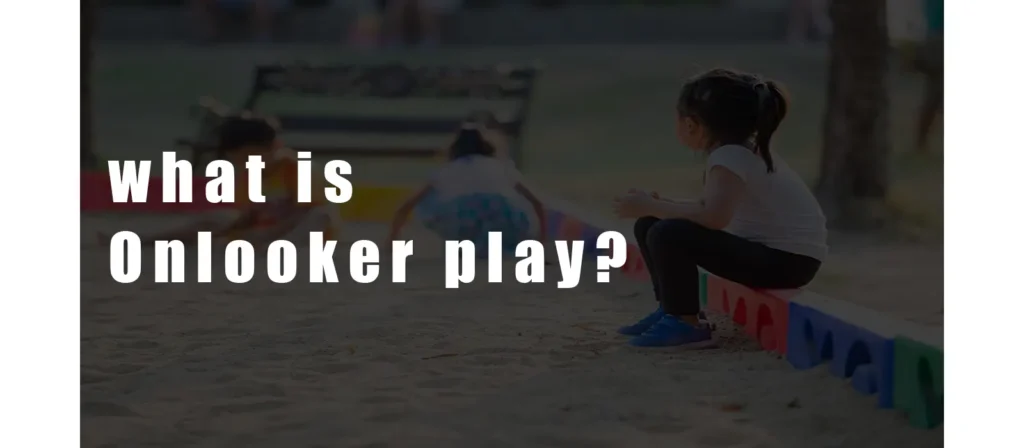
This behavior typically occurs in social settings such as playgrounds, daycare centers, and classrooms. It is commonly seen in young children who are still developing the confidence, communication skills, or familiarity needed to interact with peers during play. Importantly, onlooker play is intentional. The child is fully engaged through observation and often displays curiosity about what others are doing.
Though the child is not physically involved in the play, they are mentally present. Their focus is on the people playing rather than the toys or materials themselves. This differentiates onlooker play from other types of non-interactive behavior, such as daydreaming or disengagement.
In short, onlooker play is best understood as the act of watching others at play with interest and attention without direct participation. It reflects a unique and important behavior pattern in childhood where children closely observe their environment and peers.
Where does the onlooker play fit in the stages of play?
Child development expert Mildred Parten outlined six stages of play, each reflecting a child’s growing ability to interact with others. Onlooker play sits right in the middle, serving as a turning point between playing alone and playing with others. Here’s a simplified overview of Parten’s stages of play:
- Unoccupied play: The child is not yet playing in the traditional sense. They may stand or sit still, observe the environment, or make random movements. Often seen in infants.
- Solitary play: The child plays alone, focused on their own toys, without showing awareness or interest in nearby children. Common during infancy to toddlerhood.
- Onlooker play: The child watches others play without joining in. They may ask questions or make comments, but remain observers. This is the true onlooker play definition, learning by watching rather than doing.
- Parallel play: Children play side by side with similar toys but do not interact directly. Their activities may mirror each other, but there’s no collaboration. This spectator play stage builds comfort with proximity to peers.
- Associative play: Children start to interact while playing. They may share toys or chat, but are not working toward a shared goal.
- Cooperative play: Children engage in structured play with shared goals. They collaborate, assign roles, and follow rules. This social play stage typically appears around kindergarten age.
Understanding these six stages helps clarify the onlooker definition in early childhood. It is not a passive or delayed phase but a meaningful step between solitary play and social interaction. It is often the moment when children begin to develop an interest in others and gather information before stepping into the social space themselves.
When does onlooker play typically begin and end?
Onlooker play usually begins between the ages of two and three, though the exact timing can vary depending on the child’s temperament, environment, and comfort level in social situations. This stage tends to appear after a child has had some experience with solitary play and starts becoming more aware of others around them.
At this age, children are curious about their peers but may not yet have the language skills or social confidence to join in. Instead, they engage in play looking, where they watch attentively from the side. This aligns with a natural developmental shift. Rather than jumping directly into group play, many children choose to observe first. This period of observation helps them learn how to play appropriately, what social rules exist, and what different roles children take on during play.
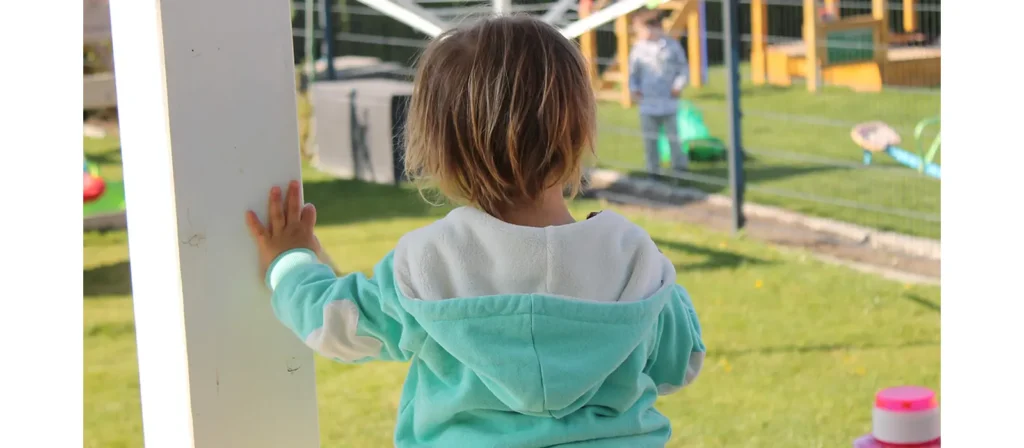
Because of this, the onlooker play age is often fluid. Some children may spend only a short time in this phase, while others may remain in it longer, especially if they are shy, new to a social setting, or still developing verbal skills. It is also not uncommon to see onlooker behavior reappear temporarily when a child is introduced to a new environment or group.
When does the onlooker play end? Most children begin to transition out of this stage naturally as their confidence, communication, and social skills develop. This typically happens by the age of three to four, as they move into parallel or associative play stages. That said, some children may still show signs of spectator onlooker behavior occasionally, even at five or six years old, especially in unfamiliar or highly stimulating settings.
It is important to note that the end of onlooker play is not marked by a sharp transition. Instead, children often move back and forth between stages based on context. A child might engage in cooperative play at home with siblings but exhibit onlooking behavior in a crowded preschool classroom.
In summary, onlooker play begins when toddlers start becoming socially aware and usually fades as they build confidence to interact. However, it can remain a flexible part of behavior during early childhood, especially in new or complex social environments.
Benefits of Onlooker Play for Early Childhood Learning
Though it may appear that a child is simply watching from the sidelines, onlooker play is packed with developmental value. During this stage, children are not disengaged. They are learning in real time by observing, thinking, and interpreting the actions of others. This observation-based behavior sets the stage for future social, cognitive, and communication skills that are essential for everyday life. Here are some of the most important benefits that children gain from onlooker play.
How it supports social and emotional development
One of the most important functions of onlooker play is helping children understand how people interact. By watching others, children begin to grasp important social concepts such as sharing, taking turns, expressing emotions, and resolving conflict.
Even if a child is not ready to join the activity, they are still engaged in child playing through mental rehearsal. They are learning what works and what doesn’t in social situations, all while remaining in a space where they feel safe and in control.
Over time, this quiet engagement builds the emotional confidence needed for age playing with peers. It is especially useful for children who are naturally cautious or sensitive. Rather than being forced into interactions before they are ready, they can learn by simply watching and reflecting.
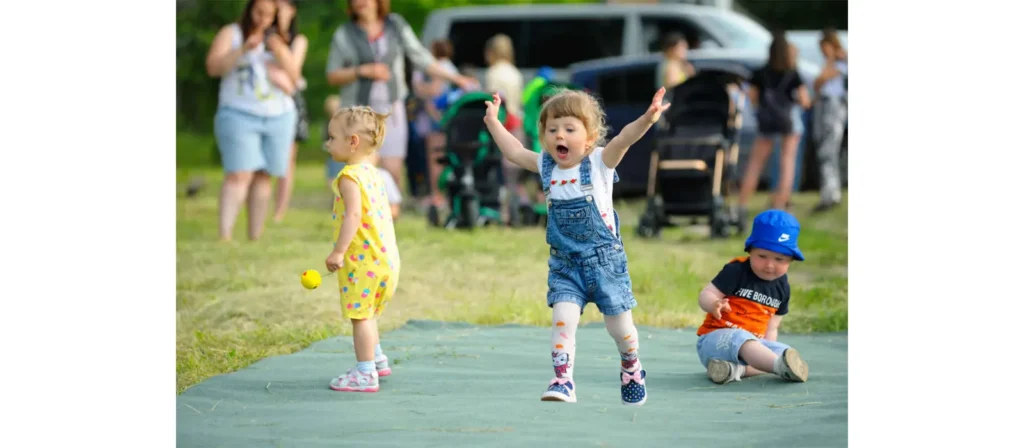
Enhancing cognitive and observational skills
Onlooker play also nurtures the mind. Children in this stage are constantly analyzing what they see. They begin to make connections between actions and outcomes. For example, they might notice that when one child offers a toy, the other smiles and says thank you. These small interactions teach cause and effect, problem-solving, and even early moral reasoning.
This is where onlooker play examples from daily life become relevant. A toddler watching a group of children build with blocks may later attempt a similar structure on their own. Without touching the materials or speaking, they are still learning by decoding patterns, strategies, and processes.
This type of learning also lays a foundation for executive function skills, including memory, attention, and the ability to shift focus. These cognitive benefits are often underestimated but are just as critical as physical or verbal milestones.
Language growth through peer observation
While children in onlooker play may not speak much themselves, they are absorbing language constantly. They hear how other children give instructions, ask for help, or express excitement. This helps build both vocabulary and context-based understanding.
Many parents report that their child seems quiet in group settings but later imitates the exact phrases they heard during play. This shows that onlookers are internalizing what they hear, even if they do not respond in the moment.
This process is particularly important for children who are still building their language skills or those learning more than one language. By observing real-life conversations, they gain insight into tone, pacing, and expression, all without direct pressure to perform.
Moreover, watching others communicate in play offers social play examples that serve as internal models. This prepares children to contribute more meaningfully when they do begin to participate actively.
How Parents and Teachers Can Support Onlooker Play
Supporting a child through onlooker play requires understanding, patience, and intentional guidance. Whether you’re a parent or a teacher, your role isn’t to rush the child into participation, but to create an environment where observation feels safe, valuable, and eventually optional, allowing them to move beyond.
The goal is to recognize that the child is already engaged in learning, even if it doesn’t look like traditional child playing. With the right approach, you can help that quiet observer grow into a confident social participant.
Provide a safe and predictable environment
Children are more likely to engage in play, whether observational or active, when they feel emotionally secure. A stable and low-pressure environment makes it easier for children to step out of onlooker behavior when they are ready.
At home, this means giving children time to adjust to new situations or around unfamiliar people. In classrooms or playgroups, it means maintaining consistent routines and offering gentle introductions to other children or activities.
Avoid forcing or coaxing a child to join in. Statements like “Why don’t you go play with them?” may trigger anxiety or hesitation. Instead, try saying something neutral and supportive, like “It looks like they’re having fun building. Let’s watch for a bit.”
Model social interaction
Children learn a lot by watching adults, too. If a child is in the onlooker play stage, you can model basic social behavior as a gentle nudge toward engagement.
Sit nearby and interact with another child or group. Narrate what’s happening in simple terms, such as “They’re making a tower with the blocks. Look how high it’s getting!” This helps the child connect the visual activity with language and structure.
Setting the Stage for Onlooker Play
A successful onlooker play experience begins with the environment. Children are more likely to observe and eventually join play when they feel emotionally secure and comfortable. Start by creating a play area that feels welcoming, open, and pressure-free. The space should allow for both active play and quiet observation, giving children the freedom to choose where they belong in the moment.
Parents and teachers can support this by preparing a safe area filled with age-appropriate, open-ended toys that invite imagination and choice. Materials such as blocks, dolls, kitchen sets, or art supplies encourage self-directed learning. For younger children, props for toddler and play activities, such as stacking cups or toy cars, can help spark curiosity.
In both home and school settings, consistency and calmness matter. Maintaining predictable routines and offering gentle introductions to new children or activities can help make onlooker play a comfortable experience. Adults should also avoid directing too much attention toward the observer, as this can increase self-consciousness and make the child feel pressured.
Avoid labeling or comparison
Avoid describing a child as “shy” or comparing them to children who are more visibly social. Labels like these can affect how children see themselves and may discourage them from engaging with others over time. Instead, recognize onlooker play as a healthy and valid form of early social development.
Rather than saying something like “You never want to play,” consider using language that values their observation. For example, say “You’re really paying close attention to what they’re doing.” This approach highlights their focus and curiosity as strengths, not shortcomings.
Role-Playing and Pretend Play
Role-playing is one of the most effective ways to encourage transition from observation to engagement. Dramatic or pretend play provides natural opportunities for both active players and observers to benefit. Parents and teachers can set out costumes, simple props, or themed setups such as a pretend kitchen, doctor’s office, or grocery store. These scenarios spark imagination while giving onlookers a chance to learn social patterns and story structure.
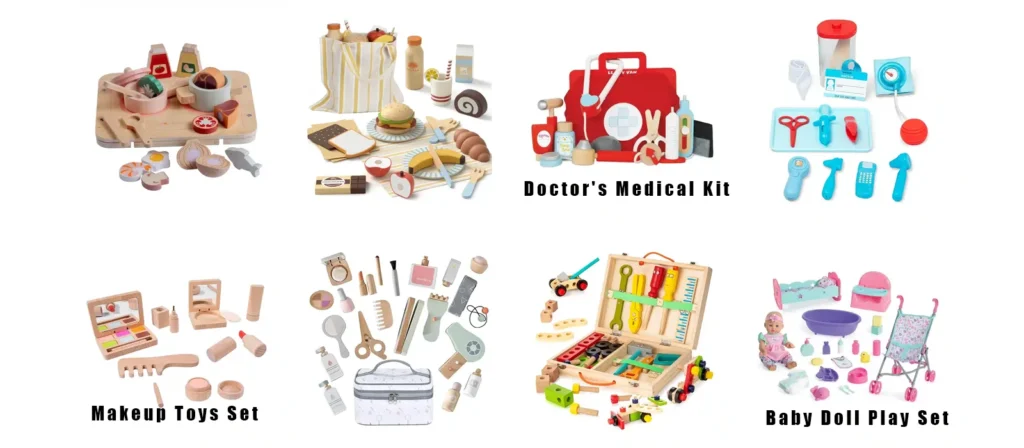
Children who prefer watching during pretend play still absorb vital lessons. They learn how others use language, negotiate roles, and express emotions in social situations. Eventually, curiosity and familiarity may lead them to take part in small ways, such as suggesting an idea or acting out a short role.
Storytelling can also work as a bridge. Adults might introduce open-ended prompts like “Let’s make up a story about a day at the park” and let children contribute verbally or silently through gestures or expressions. Over time, this encourages both creative thinking and emotional expression.
Real-Life Examples of Onlooker Play in Action
Understanding onlooker play becomes much clearer when seen in real-world situations. These examples highlight how children use observation as a form of silent learning in their everyday environments.
In a preschool classroom
A child sits quietly on a rug during playtime while a nearby group builds a train track. The child does not speak or join in, but their eyes follow every movement. They observe which pieces connect, when children take turns, and how they respond to setbacks like the track falling apart. Later, during solo time, the same child begins constructing a similar track without asking for help. This is onlooker play in action, internalizing knowledge before testing it independently.
During family play at home
At home, a toddler watches older siblings playing with a dollhouse. They do not touch the dolls or enter the game, but they lean in, listen to the voices being used, and smile at the pretend scenarios. Eventually, they walk over to a different corner and begin mimicking the play style with unrelated toys. Although no direct interaction occurred, the observation clearly sparked imaginative engagement.
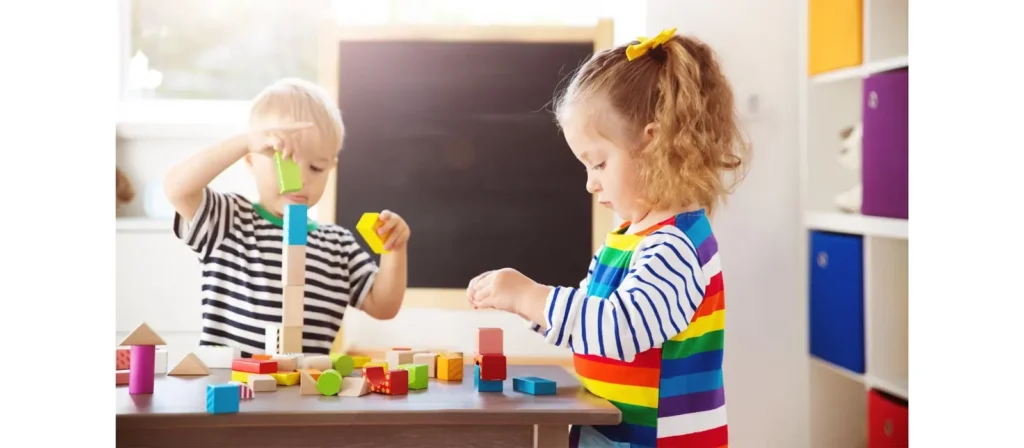
On a neighborhood playground
A child stands near the slide, watching two others take turns. They observe how children wait in line, cheer each other on, and react to minor accidents. Although the observing child does not speak, they nod or smile at certain moments. These social cues show engagement even without participation.
These real-life situations show that onlooker behavior is not passive avoidance but active mental processing. When we define onlooker play through such observations, it becomes clear that watching is often the first step toward doing.
Common Concerns About Onlooker Play in Toddlers
It is natural for parents to feel unsure when a child prefers to watch rather than participate. However, onlooker play is part of normal development and does not usually indicate a problem. Still, there are times when it may be appropriate to take a closer look at the behavior.
Situations that do not require concern
When a toddler shows interest in others’ play, makes eye contact, asks questions, or imitates behavior later, there’s little need to worry. These signs indicate that the child is observing to understand, and processing. The child may simply be easing into social interactions at their own pace.
It is also common for onlookers to appear in new or stimulating environments. For example, a child who usually engages with peers may become an observer in a large group or noisy setting. Temporary onlooking in such cases is a form of adjustment, not avoidance.
When further attention may be needed
Concerns arise when onlooker behavior persists in familiar settings and is accompanied by:
- A lack of eye contact or response to others
- No verbal interaction over time
- Withdrawal from both group and adult interactions
- Disinterest in toys, games, or storytelling
These patterns may suggest more than cautious observation. In such cases, it is wise to consult a professional in early childhood development to assess communication or social engagement levels.
Rather than focusing on how often a child participates, consider whether the child shows curiosity, emotional connection, or gradual progress. If the child continues to observe with no sign of engagement, it may signal a need for support.
Conclusion
Onlooker play is more than just watching; it’s an active and important part of a child’s social and cognitive growth. While they may not participate directly, children in this stage are learning valuable lessons about communication, behavior, and interaction.
Instead of pushing them to join, offering quiet support and recognizing their engagement can help build confidence over time. Every child develops at their own pace, and onlooker behavior is often a first step toward deeper, more meaningful play.

